Afternoon tea is on the rise, with research by Tesco finding that 74% of Brits plan to indulge in one as many times, if not more, than they did last year.
What’s more, the poll of 2,000 UK adults found that afternoon tea is most popular with 25 to 34-year-olds, with 21% enjoying it at least once a month.
“Afternoon tea is a hallmark of British cuisine, like the English brekkie, shepherd’s pie or fish and chips, so it’s great to see that younger generations are continuing the tradition,” says Tesco executive chef Jamie Robinson.
“The basics of afternoon tea offer lots of room for exploration, whether it’s quiche, cocktails or crisps, people can personalise the experience by popping on a bit of what they fancy.”
Traditional elements, like scones, are becoming more experimental
So, what does the nation fancy when it comes to afternoon tea? Do sandwiches and scones still cut the mustard or are consumers looking for something more adventurous? And, with Afternoon Tea Week (7-13 August 2023) in full swing, how are operators evolving to meet these needs?
Unsurprisingly, sandwiches, scones, and tea are the heavy hitters when it comes to afternoon tea – they were named the nation’s favourite items with 71%, 69% and 65% of the vote respectively. But even these stalwarts of the occasion are being zhushed up.
“Traditional elements, like scones, are becoming more experimental with new, different and innovative flavours on offer,” explains Francesco Mannino, executive pastry chef at Pan Pacific London. Indeed, Pan Pacific London offers a strawberry chocolate scone as part of its afternoon tea offering, served with clotted cream, strawberry & rhubarb preserve and lemon curd.
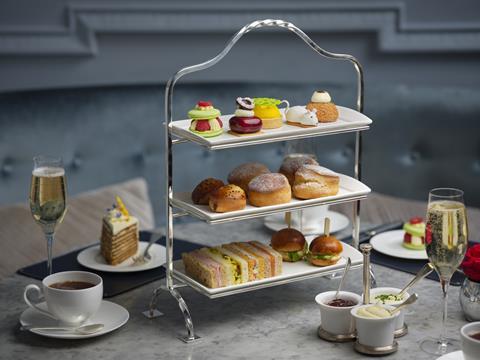
Magdalena Velczenbach, head pastry chef at The Stafford London, likes to mix different fruits and exotic spicing into scones for a “different taste”. The hotel also offers a Paxton & Whitfield Westcombe Cheddar scone, served with soft cheese and chives, as part of its afternoon menu.
Sandwiches have also been spruced up as part of The Stafford’s new menu which features flavoured breads with familiar fillings of coronation chicken and smoked salmon.
The Prince Akatoki in London has taken things one step further for its Koto Afternoon Tea which sees traditional finger sandwiches replaced by miniature brioche buns filled with seared tuna, avocado and wasabi dressing, as well as chicken katsu sandos.
“Dawn Foods’ Global Trends Report revealed that three out of four consumers enjoy sweet baked goods with a spin on the ‘traditional’ and we are seeing some innovative creations from premium sandwich fillings and quality savouries to delicate ‘dinky’ patisserie products,” explains Jacqui Passmore, marketing manager UK and Ireland at Dawn Foods.
Going against tradition?
Less traditional items are also vying for a place as part of the occasion – and consumers are receptive to them. Tesco’s research found that 32% of those polled wanted to add cocktails to the experience, while 17% would add salad, vegetables or houmous. Another 20% believe cold meats would improve the meal, and 10% would add sushi to their ideal afternoon tea spread.
Pies are among the additions to the new Regency Afternoon Tea at Theatre Royal Drury Lane in London. The flavours will be changed seasonally throughout the year, starting with coronation chicken pies with caramelised onion chutney. Another item on the menu is a bitesize English crumpet topped with Earl Grey infused cream cheese and smoked salmon, as well as a savoury madeleine with whipped English feta and pickled heritage carrot.
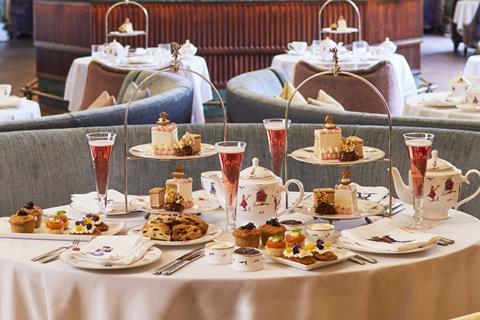
Other savoury delights to grace the tea stand of late include posh sausage rolls, croquettes, and even mini burgers.
“We’re serving a selection of artisan sandwiches, smoked chicken consommé and a pork, haggis & apple sausage roll for our savoury selection,” says Christopher Nurse, head pastry chef at Rusacks St Andrews in Scotland. He also highlights an increasing trend of embracing “cult dishes of the 1970s and 1980s”, such as vol au vents, mousses, and quiches.
“Nostalgia and retro are big right now,” agrees Edward Miles, managing director of frozen food supplier Frank Dale. “We’re noticing that with events such as the Queen’s Platinum Jubilee last year, and the King’s Coronation this year, there’s a move towards nostalgia, with people looking for all things British, and afternoon tea has certainly been swept up in that trend.
“Although regular afternoon tea aficionados may look for unique or unusual offerings, the occasional afternoon tea taker still expects the classic finger sandwiches, scones, cakes and pastries that truly celebrate this time-honoured British tradition.”
Global inspiration
For the more adventurous appetites, chefs are embracing global flavours and formats.
“People are becoming more adventurous and want to see a range of flavours from different cuisines, including a lot of Asian and Middle Eastern influences, instead of the traditional afternoon tea offerings,” believes The Stafford London’s Velczenbach.
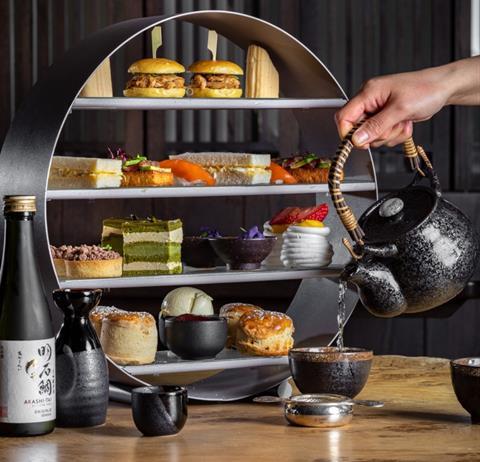
For example, the aforementioned Koto Afternoon Tea at The Prince Akatoki in London embraces fusion flavours and techniques with the likes of matcha & pistachio cake and yuzu crème brûlée gracing the menu alongside the Asian-inspired savoury options.
“I draw inspiration from my time in the countries I worked in such as China, Korea and France,” adds Pan Pacific London’s Mannino. “I love the stylish, refined yet minimalist style of Asian patisserie which has greatly influenced my own technique, which is never overly decorated and full of fresh flavours.”
The Kopi Tiam Afternoon Tea, hosted at Pan Pacific London’s The Orchid restaurant, features a selection of Asian savouries including a Siu Mai basket, steamed lotus bun filled with salted egg yolk and custard sauce, and a steamed sweet potato bun.
Themed teas, such as those based on specific cultures or locations as well as more whimsical ones continue to invite and delight diners across the UK.
“Themed teas will continue to grow, there has been a massive uptake in fashion brands curating afternoon tea experiences or collaborating with existing afternoon tea initiatives,” explains Graham Hornigold, pastry chef and founder of Longboys. “I expect more businesses, especially those in retail, to tap into this, it not only brings footfall and brand awareness but also brings in more sales and keeps customers in the store for longer.”
Afternoon tea for all
Another type of afternoon tea drawing people in are ones catering to specific dietary requirements. “With a growing emphasis on wellness and inclusivity, there is an increased demand for afternoon tea options that accommodate different dietary requirements, including gluten-free and vegan options,” adds The Stafford London’s Velczenbach.
Rusacks St Andrews is among the outlets to have adapted its scones to be vegan, dairy-free, or gluten-free when needed, while still maintaining their “lights and fluffy” texture.
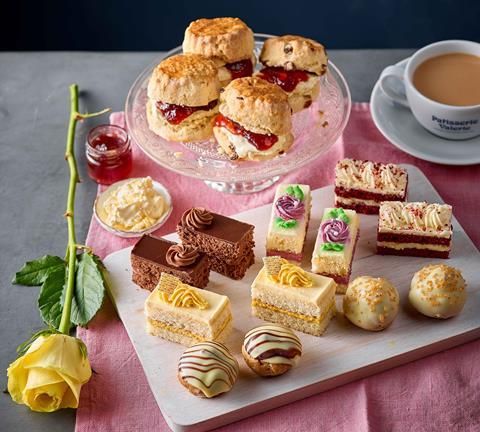
”One of the biggest changes has been the adaption of afternoon tea to an orderable, online experience – whether by post or via a dedicated food delivery service,” Passmore at Dawn Foods adds.
”The opportunities with online have enabled well-known bakery names as well as smaller, more niche food businesses to enter the afternoon tea market. This in turn has made the sector more competitive and diverse in terms of product options. Packaging, branding and social media appeal has also been an infinitely more important aspect for businesses in the afternoon sector. Patisserie Valerie is one bakery retailer who has championed this concept with exquisite flavours and formats including Crème Brule Choux and Red Velvet slices; a real point of difference from the traditional offering and all delivered direct to the consumer’s door.”
Passmore also highlights Piglet’s Pantry as a firm worthy of a mention. Piglet’s Pantry offers a variety of formats and tiers of afternoon tea, including vegan and vegetarian choices, as well as a ‘decorate your own’ option for children.
Regardless of the consumers an outlet is trying to attract, one thing must stay the same – quality.
“Afternoon tea is, and always has been, considered a special treat so quality of ingredients and variety of options remains incredibly important,” Edward Miles from Frank Dale adds.
“From the unique teas on offer to the array of sweet and savoury choices, the expectations of an afternoon tea customer is generally high, so ensuring consistency and quality is vital. With an afternoon tea often representing a more cost effective, yet indulgent dining occasion, during the current cost of living crisis, we anticipate that their popularity will continue to grow.”




















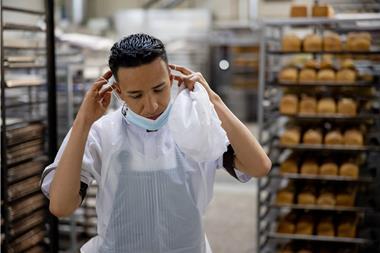

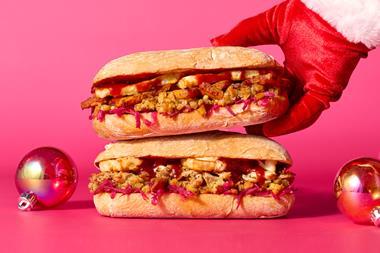




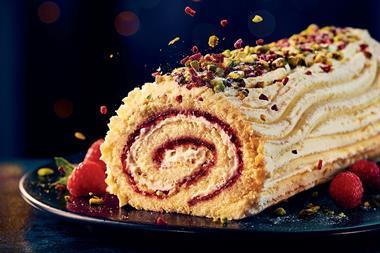

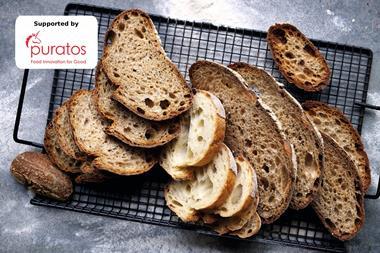



No comments yet